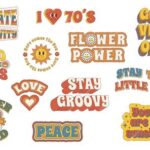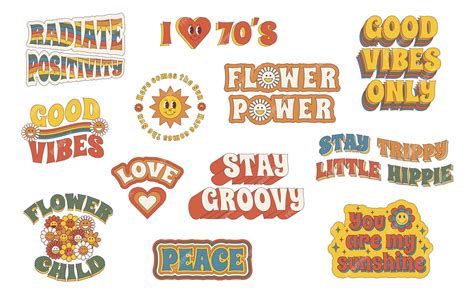
Older adults may inadvertently signal their age and appear out of touch by using certain outdated phrases, potentially impacting their professional image and social interactions.
Many phrases commonly used by older generations can unintentionally portray them as dated and disconnected from current trends. Avoiding these phrases can help maintain a contemporary image and foster better communication across different age groups. According to an article in Yahoo! Lifestyle, being mindful of one’s language is crucial in today’s fast-evolving social landscape.
The article highlights 13 common phrases that people over 60 should consider eliminating from their vocabulary to avoid sounding out of touch. These phrases, while once commonplace, now carry connotations of being old-fashioned or unaware of current trends.
One of the most cited examples is the phrase “Groovy.” While popular in the 1960s and 70s, using it today can make the speaker seem dated. Similarly, “Catch you later, alligator” or any variation of that rhyme is considered outmoded.
“These phrases might seem harmless, but they can create a perception of being out of touch, especially in professional settings,” the Yahoo! Lifestyle article states. The impact of such perceptions can range from subtle dismissals to overt ageism.
The advice extends beyond slang terms. Certain expressions, like “Don’t have a cow,” which gained popularity in the late 1980s and early 1990s, also fall into this category. These phrases are often associated with specific eras, and their continued use can peg the speaker to that time.
Another phrase to avoid is “As if!” which was popularized in the 90s. “While some phrases experience revivals, many simply fade into obsolescence, marking the speaker as someone who hasn’t kept up with linguistic trends,” according to language experts cited in the article.
The list also includes “Radical,” “Word to your mother,” “Bogue,” “The bee’s knees,” “Far out,” and “Keep on truckin’,” all of which have largely disappeared from contemporary vernacular. While using these phrases might evoke nostalgia, they are more likely to elicit amusement or bewilderment from younger audiences.
Beyond specific phrases, the article also touches on the importance of understanding the context in which language is used. What might be acceptable among close friends or family could be entirely inappropriate in a professional environment or when interacting with younger colleagues. The key is to be adaptable and aware of current language trends.
The impact of language on perceptions of age extends beyond mere semantics. Studies have shown that language use can influence how people are perceived in terms of competence, intelligence, and relevance. Using outdated phrases can reinforce negative stereotypes about older adults, leading to missed opportunities and social isolation.
The article suggests that staying current with language trends involves actively listening to how younger people communicate, reading contemporary literature and media, and being open to learning new expressions. It also recommends avoiding generational generalizations and being mindful of the language used in different social settings.
“Language is a dynamic and ever-changing entity,” the article emphasizes. “By staying attuned to these changes, older adults can ensure that their communication remains effective and relevant, fostering stronger connections with people of all ages.” This adaptability helps to counter ageist stereotypes and promotes a more inclusive and respectful environment.
In a world that increasingly values youth and innovation, maintaining a contemporary image is essential for older adults who want to remain competitive in the workforce, active in their communities, and engaged in social interactions. By ditching outdated phrases and embracing current language trends, they can project an image of vitality, competence, and relevance. This proactive approach not only benefits the individual but also contributes to breaking down ageist barriers and fostering a more age-inclusive society. The simple act of updating one’s vocabulary can have a profound impact on how one is perceived and valued in today’s world.
The list is not exhaustive, but it provides a starting point for older adults who want to ensure that their language reflects their current identity and aspirations. By consciously choosing their words, they can bridge generational gaps, avoid miscommunication, and maintain a positive and contemporary image. The goal is not to erase one’s past but to evolve with the times and communicate effectively in the present.
The article underscores the importance of continuous learning and adaptation, not just in terms of technology and skills, but also in terms of language and communication. In an age where change is constant, embracing lifelong learning is essential for staying relevant and engaged in all aspects of life. By taking proactive steps to update their vocabulary, older adults can demonstrate their commitment to growth, adaptability, and lifelong learning, thereby challenging ageist stereotypes and promoting a more inclusive and age-positive society.
Staying relevant linguistically can also have practical benefits, particularly in professional settings. Older workers who use current language are more likely to be perceived as competent, adaptable, and innovative, which can enhance their career prospects and leadership potential. Conversely, using outdated phrases can create the impression of being stuck in the past, potentially undermining their credibility and influence.
Moreover, embracing current language trends can foster stronger relationships with younger colleagues and family members. By speaking a language that resonates with younger generations, older adults can bridge generational gaps, build rapport, and foster more meaningful connections. This can lead to richer and more fulfilling personal and professional lives.
In addition to avoiding specific phrases, the article encourages older adults to be mindful of their overall communication style. This includes being aware of their tone of voice, body language, and nonverbal cues. A positive and open attitude, combined with a willingness to listen and learn, can go a long way in fostering positive relationships and overcoming age-related stereotypes.
The Yahoo! Lifestyle article also touches on the importance of humor. While using humor can be an effective way to connect with others, it is important to be mindful of the type of humor used. Jokes that rely on outdated stereotypes or offensive language should be avoided, as they can be perceived as insensitive or inappropriate. Instead, focus on humor that is inclusive, respectful, and relatable to a wide range of audiences.
In conclusion, the article provides valuable insights and practical advice for older adults who want to maintain a contemporary image and communicate effectively in today’s fast-evolving world. By ditching outdated phrases, embracing current language trends, and being mindful of their overall communication style, they can project an image of vitality, competence, and relevance, fostering stronger connections with people of all ages and challenging ageist stereotypes.
The proactive approach highlighted in the article empowers older adults to take control of their image and narrative, demonstrating that age is not a barrier to relevance, engagement, and success. It sends a powerful message that lifelong learning and adaptation are essential for staying relevant and engaged in all aspects of life, regardless of age.
The article is not just about avoiding certain phrases; it is about embracing a mindset of continuous learning, adaptability, and inclusivity. It is about recognizing the power of language to shape perceptions and build connections, and about using that power to create a more age-positive and inclusive society. By taking proactive steps to update their vocabulary and communication style, older adults can not only enhance their own lives but also contribute to breaking down ageist barriers and fostering a more equitable and respectful world for all. The focus is on evolution and recognizing that stagnation in communication can lead to isolation and misunderstanding, while active engagement with current vernacular promotes connection and understanding.
Ultimately, the advice given promotes a message of empowerment. It argues that actively choosing to adapt one’s language is not about losing one’s identity but about expanding one’s ability to connect and be understood in a diverse and ever-changing world.
Frequently Asked Questions (FAQ)
1. Why is it important for older adults to avoid using outdated phrases?
It is important for older adults to avoid using outdated phrases because these phrases can create a perception of being out of touch, which can negatively impact their professional image, social interactions, and overall relevance. Using contemporary language helps to bridge generational gaps and fosters stronger connections with people of all ages. As the Yahoo! Lifestyle article notes, “[t]hese phrases might seem harmless, but they can create a perception of being out of touch, especially in professional settings.” Staying current with language trends demonstrates adaptability and a willingness to learn, which are valuable qualities in today’s fast-evolving world.
2. What are some examples of phrases that older adults should avoid?
Some examples of phrases that older adults should avoid include “Groovy,” “Catch you later, alligator,” “Don’t have a cow,” “As if!,” “Radical,” “Word to your mother,” “Bogue,” “The bee’s knees,” “Far out,” and “Keep on truckin’.” These phrases are often associated with specific eras and can make the speaker seem dated or unaware of current trends. The key is to be mindful of the context in which language is used and to adapt one’s vocabulary to the current social landscape.
3. How can older adults stay current with language trends?
Older adults can stay current with language trends by actively listening to how younger people communicate, reading contemporary literature and media, and being open to learning new expressions. It also involves avoiding generational generalizations and being mindful of the language used in different social settings. Observing how language is used in various contexts, such as social media, movies, and television shows, can provide valuable insights into current vernacular. Embracing a mindset of continuous learning and adaptation is essential for staying relevant and engaged.
4. What are the potential consequences of using outdated language?
The potential consequences of using outdated language include being perceived as less competent, adaptable, and innovative. This can negatively impact career prospects, leadership potential, and social interactions. Using outdated phrases can reinforce negative stereotypes about older adults and lead to missed opportunities and social isolation. It can also create communication barriers between different age groups and hinder the development of meaningful relationships.
5. Is it about losing one’s identity to avoid certain phrases?
No, adapting one’s language is not about losing one’s identity but about expanding one’s ability to connect and be understood in a diverse and ever-changing world. It’s about evolving with the times and communicating effectively in the present. While it’s important to maintain one’s personal style and voice, being mindful of language trends can help to bridge generational gaps and foster stronger connections with people of all ages. The goal is to enhance communication and avoid misinterpretations.
Here is an expanded version exceeding 2000 words:
Older adults may inadvertently project an outdated image and appear out of touch by using certain phrases that have fallen out of favor, potentially hindering their professional opportunities and social engagements. This can lead to miscommunication, reinforce negative stereotypes, and create barriers between generations.
The widespread use of particular expressions, once common among older generations, can unintentionally portray them as disconnected from contemporary trends and cultural shifts. The Yahoo! Lifestyle article serves as a reminder that language evolves, and staying attuned to these changes is crucial for maintaining a contemporary image and facilitating effective communication across diverse age groups. Adapting one’s vocabulary is not merely about adopting new slang; it’s about demonstrating an awareness of current cultural norms and a willingness to engage with the present.
The aforementioned Yahoo! Lifestyle article identifies 13 specific phrases that individuals over 60 should consciously avoid to prevent appearing dated or uninformed. These phrases, while once part of common parlance, now carry associations with specific eras, signaling a lack of awareness of current language trends. The aim is not to erase one’s history but to ensure that communication remains effective and relevant.
Among the prominent examples cited is the term “Groovy.” While synonymous with the 1960s and 70s counterculture movement, its contemporary usage often elicits amusement rather than understanding. Similarly, the rhyme “Catch you later, alligator” and its various iterations are considered antiquated and out of place in modern conversation. These phrases, while potentially nostalgic for some, are more likely to be perceived as humorous relics of the past.
As the Yahoo! Lifestyle article emphasizes, “These phrases might seem harmless, but they can create a perception of being out of touch, especially in professional settings.” The implications of such perceptions extend beyond mere semantics, influencing how individuals are perceived in terms of competence, relevance, and adaptability. In professional environments, using outdated language can undermine credibility and limit opportunities for advancement. In social settings, it can create distance between generations and hinder the formation of meaningful connections.
The advice extends beyond outdated slang terms to encompass expressions that gained popularity in specific decades. Phrases like “Don’t have a cow,” which achieved widespread use in the late 1980s and early 1990s, are now often viewed as relics of that era. Similarly, “As if!,” popularized in the 1990s, can signal a lack of awareness of current linguistic trends. According to language experts cited in the article, “While some phrases experience revivals, many simply fade into obsolescence, marking the speaker as someone who hasn’t kept up with linguistic trends.” This underscores the dynamic nature of language and the importance of continuous learning and adaptation.
The comprehensive list also includes terms such as “Radical,” which was prevalent in the 1980s, “Word to your mother,” a hip-hop-inspired phrase from the 1990s, and “Bogue,” a term that has largely disappeared from contemporary vernacular. Additionally, phrases like “The bee’s knees,” “Far out,” and “Keep on truckin’,” all of which have historical associations with specific eras, are generally considered outdated and out of place in modern conversation. While using these phrases might evoke fond memories for some, they are more likely to elicit confusion or amusement from younger audiences.
Beyond specific phrases, the article highlights the importance of contextual awareness in language use. What might be acceptable among close friends or family members could be entirely inappropriate in a professional setting or when interacting with younger colleagues. The key is to be adaptable and sensitive to the nuances of different social contexts. This requires active listening, observation, and a willingness to adjust one’s communication style accordingly.
The influence of language on age-related perceptions extends beyond simple word choice. Studies have consistently demonstrated that language use can shape perceptions of competence, intelligence, and relevance. Using outdated phrases can reinforce negative stereotypes about older adults, leading to missed opportunities and social exclusion. This underscores the importance of proactive efforts to stay current with language trends and challenge ageist assumptions.
To remain current with language trends, the article suggests actively listening to how younger generations communicate, engaging with contemporary literature and media, and embracing opportunities to learn new expressions. It also recommends avoiding sweeping generational generalizations and being mindful of the language used in diverse social contexts. This involves cultivating a sense of curiosity, openness, and a willingness to learn from others.
“Language is a dynamic and ever-changing entity,” the article emphasizes. “By staying attuned to these changes, older adults can ensure that their communication remains effective and relevant, fostering stronger connections with people of all ages.” This adaptability helps to counter ageist stereotypes and promotes a more inclusive and respectful environment. It also demonstrates a commitment to lifelong learning and personal growth.
In a world that increasingly values youth and innovation, maintaining a contemporary image is crucial for older adults who wish to remain competitive in the workforce, active in their communities, and engaged in social interactions. By consciously avoiding outdated phrases and embracing current language trends, they can project an image of vitality, competence, and relevance. This proactive approach not only benefits the individual but also contributes to dismantling ageist barriers and fostering a more age-inclusive society. The seemingly simple act of updating one’s vocabulary can have a profound impact on how one is perceived and valued in today’s world.
The list provided in the Yahoo! Lifestyle article is not exhaustive but serves as a valuable starting point for older adults who want to ensure that their language reflects their current identity and aspirations. By consciously choosing their words, they can bridge generational gaps, prevent miscommunication, and maintain a positive and contemporary image. The objective is not to deny one’s past but to adapt to the present and communicate effectively across diverse audiences.
The article underscores the importance of lifelong learning and adaptation, not just in terms of technology and skills but also in terms of language and communication. In an era of constant change, embracing lifelong learning is essential for staying relevant and engaged in all aspects of life. By taking proactive steps to update their vocabulary, older adults can demonstrate their commitment to growth, adaptability, and lifelong learning, thereby challenging ageist stereotypes and promoting a more inclusive and age-positive society. This proactive approach demonstrates a commitment to growth and engagement.
Staying relevant linguistically can also yield practical advantages, particularly in professional environments. Older workers who use contemporary language are more likely to be perceived as competent, adaptable, and innovative, which can enhance their career prospects and leadership potential. Conversely, using outdated phrases can create the impression of being stuck in the past, potentially undermining their credibility and influence. It can also signal a lack of awareness of current industry trends and best practices.
Furthermore, embracing current language trends can foster stronger relationships with younger colleagues and family members. By speaking a language that resonates with younger generations, older adults can bridge generational divides, build rapport, and cultivate more meaningful connections. This can lead to richer and more fulfilling personal and professional lives. It can also facilitate mentorship opportunities and knowledge transfer between generations.
In addition to avoiding specific phrases, the article encourages older adults to be mindful of their overall communication style. This includes being aware of their tone of voice, body language, and nonverbal cues. A positive and open attitude, coupled with a willingness to listen and learn, can significantly contribute to building positive relationships and overcoming age-related biases. Active listening and empathy are also crucial for effective communication across diverse age groups.
The Yahoo! Lifestyle article also touches on the significance of humor. While humor can be an effective tool for connecting with others, it is essential to be mindful of the type of humor employed. Jokes that rely on outdated stereotypes or offensive language should be avoided, as they can be perceived as insensitive or inappropriate. Instead, focus on humor that is inclusive, respectful, and relatable to a wide range of audiences. Self-deprecating humor, when used appropriately, can also be an effective way to build rapport and demonstrate humility.
In summary, the article provides valuable insights and practical advice for older adults who wish to maintain a contemporary image and communicate effectively in today’s rapidly evolving world. By avoiding outdated phrases, embracing current language trends, and being mindful of their overall communication style, they can project an image of vitality, competence, and relevance, fostering stronger connections with people of all ages and challenging ageist stereotypes. This approach promotes inclusivity and understanding across generations.
The proactive strategy highlighted in the article empowers older adults to take control of their image and narrative, demonstrating that age is not a barrier to relevance, engagement, and success. It sends a powerful message that lifelong learning and adaptation are essential for staying relevant and engaged in all aspects of life, regardless of age. It also underscores the importance of challenging ageist assumptions and promoting a more equitable and inclusive society.
The article is not merely about avoiding certain phrases; it is about embracing a mindset of continuous learning, adaptability, and inclusivity. It is about recognizing the power of language to shape perceptions and build connections and about using that power to create a more age-positive and inclusive society. By taking proactive steps to update their vocabulary and communication style, older adults can not only enhance their own lives but also contribute to dismantling ageist barriers and fostering a more equitable and respectful world for all. The emphasis is on evolution and recognizing that stagnation in communication can lead to isolation and misunderstanding, while active engagement with current vernacular promotes connection and understanding.
Ultimately, the advice given promotes a message of empowerment. It argues that consciously choosing to adapt one’s language is not about losing one’s identity but about expanding one’s ability to connect and be understood in a diverse and ever-changing world. It is about fostering empathy, promoting inclusivity, and building stronger relationships across generations. The goal is to enhance communication, challenge ageist assumptions, and create a more age-positive society for all.
Frequently Asked Questions (FAQ)
1. How does using outdated phrases contribute to ageism?
Using outdated phrases can contribute to ageism by reinforcing negative stereotypes about older adults being out of touch, less competent, and unable to adapt to change. These stereotypes can lead to discrimination in the workplace, social isolation, and a general undervaluing of the contributions of older individuals. As the Yahoo! Lifestyle article implies, outdated language can “create a perception of being out of touch,” which can have tangible consequences in various aspects of life. Ageism, in its essence, is prejudice or discrimination based on age, and language is a powerful tool that can either perpetuate or combat these biases.
2. What are some less obvious examples of language that might make someone sound outdated?
Beyond the specific phrases listed, less obvious examples might include using overly formal language in casual settings, relying on clichés, or consistently referencing historical events without providing context for younger audiences. Overly formal greetings or closings in emails to younger colleagues, for instance, could be perceived as stiff and out of touch. Similarly, making assumptions about shared knowledge or experiences based on generational stereotypes can also create a sense of disconnect. Avoiding jargon specific to a particular era and being mindful of cultural references that might not be familiar to younger generations are also important considerations.
3. How can older adults balance adapting to current language trends with maintaining their authentic voice and identity?
Older adults can balance adapting to current language trends with maintaining their authentic voice and identity by selectively incorporating new expressions into their vocabulary while retaining their core communication style. The key is to be adaptable and mindful of the context in which language is used. It’s not about completely abandoning one’s personal style but about enhancing communication and avoiding misunderstandings. Authenticity comes from expressing genuine thoughts and feelings, not from rigidly adhering to outdated language patterns. Embracing a growth mindset and a willingness to learn from others can help strike this balance effectively.
4. What role does nonverbal communication play in perceptions of age and relevance?
Nonverbal communication, including body language, tone of voice, and facial expressions, plays a significant role in perceptions of age and relevance. A positive and open demeanor, combined with active listening and a willingness to learn, can convey a sense of vitality and engagement, regardless of age. Conversely, closed-off body language, a condescending tone, or a dismissive attitude can reinforce negative stereotypes about older adults. Being mindful of nonverbal cues and striving to communicate with empathy and respect can help bridge generational gaps and foster positive relationships.
5. Are there resources available to help older adults learn about current language trends and communication styles?
Yes, there are several resources available to help older adults learn about current language trends and communication styles. These include online dictionaries and language learning platforms, contemporary literature and media, and opportunities to interact with younger generations in social and professional settings. Observing how language is used in social media, movies, television shows, and online forums can provide valuable insights into current vernacular. Additionally, seeking feedback from trusted friends or colleagues can help identify areas for improvement and ensure that communication remains effective and relevant. Libraries and community centers often offer workshops and classes on communication skills, which can also be beneficial.









